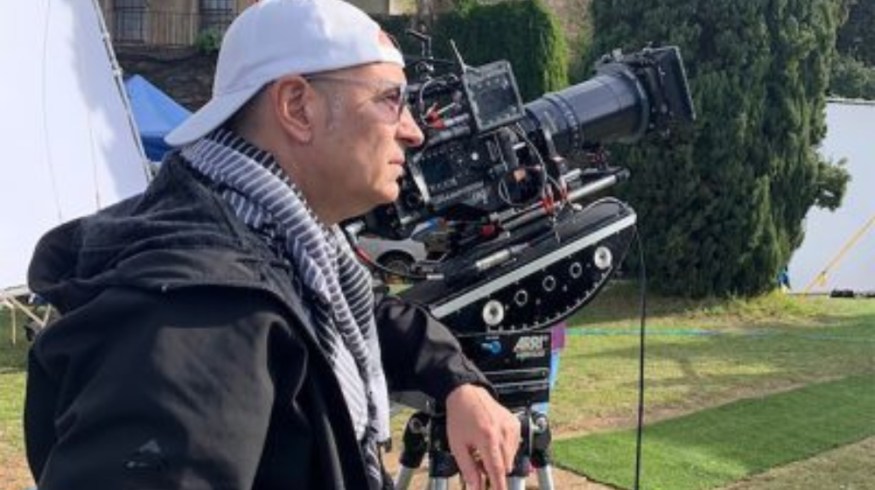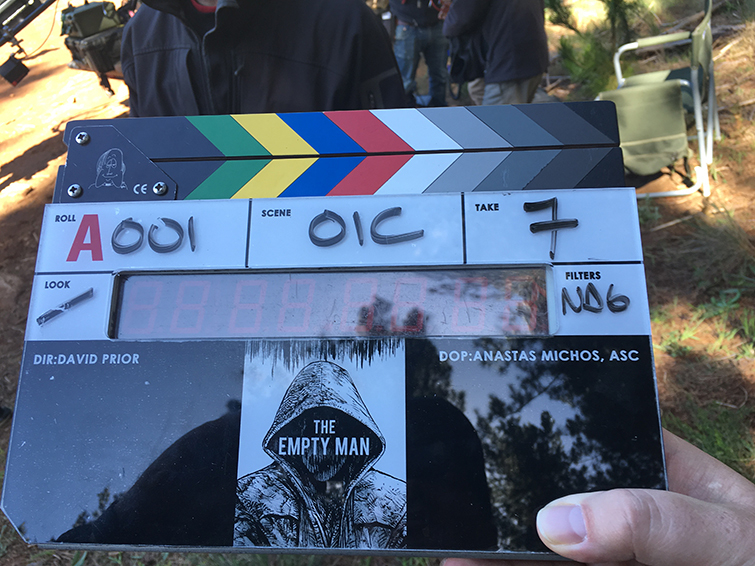
Cinematographer Interview: Shooting Darkness for “The Empty Man”
PremiumBeat chats with director of photography Anastas Michos about shooting with the RED Monstro 8K on his latest feature. Dive in.
While we all know that the film industry is in a state of rapid change, one thing that’ll always remain constant is just how much audiences love a good scare. And, while many movies might be delayed right now, The Empty Man, written and directed by David Prior, has hit the theaters offering a nice escape back into the familiarity of cinema.
But, shooting a high-concept horror feature isn’t all fun and games, so to speak. Horror presents many unique challenges—from practical ones about camera ISOs and lighting in dark settings, to psychological ones about finding new ways to scare audiences.
We chatted with The Empty Man’s Director of Photography Anastas Michos about his cinematography process, as well as his advice and insights for breaking into the industry.
The Challenges of Setting Mood, Time, and Place
Speaking with Michos was a real treat. As a cinematographer, he has almost fifty DP credits to his name ranging from a wide variety of projects and genres. To most, though, he might be best known for his collaborations with directors like Milos Forman, Oliver Stone, and Ron Howard, as well as on some big name films like Man on the Moon, Texas Chainsaw and The First Purge. As with most filmmakers who have had success for years, I asked about what brought him into the industry.
I’ve always felt that filmmaking is about capturing communality and the essence of the universal human experience. And, that’s what I’ve wanted to do and I’ve been given the opportunity to travel across the world filmmaking. As far as cinematography, although I come from a musical background, early on I recognized that I’m also very attracted to visual storytelling and the challenges of setting mood, time, and place.
It’s these challenges of visual storytelling that define the craft of cinematography as you can see across Michos’ career, including The Empty Man. It takes a keen eye as well as a creative and technical mind to handle the cinematography for big-budget feature films.
Shooting Digital with the RED Monstro 8K
Like many in the industry, throughout his career Michos has had to evolve from shooting film and into our new digital future. The Empty Man is no different as Michos—who has tons of experience in high resolution and even IMAX digital filmmaking—shot his latest horror feature with the RED Monstro 8K. Here’s his full camera and gear breakdown, and why the production chose the Monstro 8K.
It was shot in anamorphic with C-series Panavision lenses, with a mixture of possibly a G-series lens in there. And, we shot it on the Monstro 8K. The director, David Prior, is a protege and friend of David Fincher, and Fincher is a huge RED camera user and supporter. So, we were primarily influenced by our director’s familiarity with that camera.
As with any director and cinematographer partnership, the choice for what camera and format to shoot with is an important decision. It’s also one that’s made in tight collaboration, with both parties having a say in how the footage should be captured, as well as what the ultimate goals of the production are. For The Empty Man, which featured some notable stars and a decent budget, the Monstro 8K was a nice fit based on the duo’s familiarity and preferences for the DSMC2 camera.
The Challenges of Working with Darkness

With The Empty Man being shot mostly at night, camera choice was paramount. Image via 20th Century Fox.
Alongside the many practical and technical decisions that go into a DP and director choosing their camera for a production, the unique challenges of the film itself must be addressed. Michos and Prior knew early on that much of The Empty Man would take place in some classic horror-filled locations—dark tunnels and outdoors at night. Michos talked about what he was looking for in a camera for these challenges, specifically.
In general, with digital cinematography I choose a camera for its look and sensitivity to light. In film, I would do the same, but with film stock. So, with The Empty Man—it being primarily shot at night—it was a choice to go with that specific camera and with its native 800 ISO, which was very useful—specifically in anamorphic—to get those images in those very dark spaces.
It’s interesting to note too how an experienced DP handles these decisions based on whether the film would be shot on film or digitally. With film, the decision is undeniably based on the type of film stock and what kind of sensitivity it can handle for light. The principles are similar for digital. However, Michos is looking at ISO and what settings the Monstro 8K could offer for their unique needs.
The Rhythm and Unpredictability of Shooting Horror
As you can see in the trailer, The Empty Man is very much of the horror genre. And, for those who’ve tried shooting horror before know, the genre can be both accessible and problematic. The biggest issues with many films have less to do with technical aspects, and more with defining how horror films work and what scares people.
I think that in order to shoot an effective horror film, one has to understand moving pictures. Literally, the fact that we are making images that exist in time and space. Once we have that understanding, you recognize that humans react to the unpredictable—or react to what they expect—and you then have to shake that up. It’s as much as studying the rhythm of horror films and what makes a person scared, as it is photography. Specifically in terms of lighting as to how you achieve it.
Michos goes on to advise aspiring filmmakers looking to go into horror that your best steps to learn and improve would be to devour as much horror content as possible. Also, while Michos has worked in the suspense genre just as much, horror can actually be much more satisfying because its goal is to always provide a payoff at the end.
Advice on Breaking into the Industry

Michos attributes his success to hard work and mentorships. Image via Anastas Michos and 20th Century Fox.
Finally, while Michos was eager to talk about his latest and future projects, he’s also been quite fortunate to work in the industry for decades on a wide variety of projects, big and small. Working his way up as a camera operator, he credits both hard work and some amazing mentors who’ve helped him along the way.
The advice that I have for young cinematographers is… perseverance. Studying the craft and knowing the craft, and having perseverance to make it through the obstacles that could get in your way for the jobs you might want—they will be overcome if you’re tenacious enough. People will recognize your skill and they’ll recognize your talent and give you your break.
This advice is true for whatever your passion in film may be. No one starts off directing, shooting, or acting on $100 million Marvel movies. Instead, it takes a combination of eagerness and perseverance to stay after it and make the most out of every opportunity that comes your way.
Cover image via Anastas Michos and 20th Century Fox.
For more filmmaking interviews and advice, check out these articles below.
- Filmmaker Interview: Jim Cummings Talks “The Wolf of Snow Hollow”
- How an iPhone Facial Capture Choreographed 200 Drones
- Developing a New Hollywood with Cinematographer Caleb Deschanel
- HELLCAT Boot in 3D: An Interview with Already Been Chewed
- Remembering the Cinematography of the Late Michael Chapman








